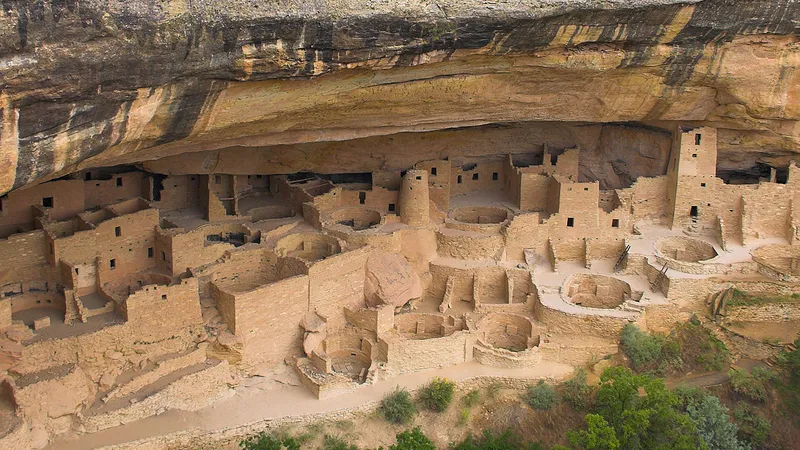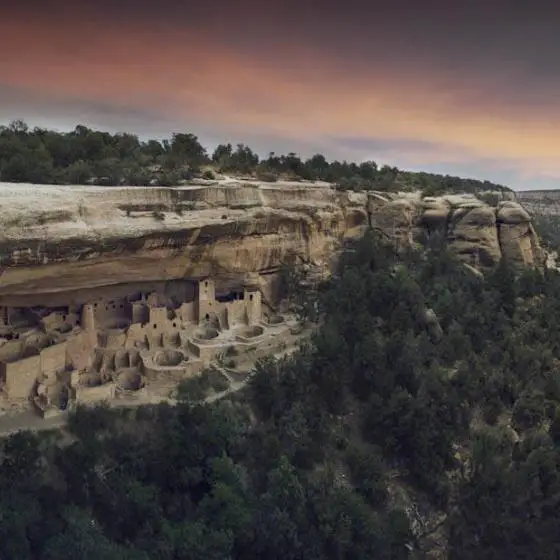
Mesa Verde National Park, nestled in the southwestern corner of Colorado, stands as a testament to the rich history and cultural heritage of the ancestral Puebloan people. This UNESCO World Heritage Site is renowned for its remarkable cliff dwellings and archaeological sites, captivating visitors with a journey through time. In this article, we delve into the intriguing history of Mesa Verde, exploring the reasons behind its abandonment, its worldwide fame, and uncovering four fascinating facts about this archaeological marvel. We’ll also unravel the discovery of Mesa Verde in 1888, shedding light on the pioneers who revealed this hidden gem to the world.
Why was Mesa Verde Abandoned?
One of the most captivating mysteries surrounding Mesa Verde is the abrupt abandonment of the cliff dwellings around the late 13th century. The ancestral Puebloans, who had inhabited the region for centuries, left behind the elaborate stone structures that characterize Mesa Verde. Archaeologists have proposed various theories to explain this enigmatic departure.
Some scholars suggest that a combination of factors, including prolonged drought, resource depletion, and societal pressures, compelled the ancestral Puebloans to seek more sustainable living conditions. Others point to the allure of spiritual or religious reasons, proposing that the community migrated in search of a more harmonious relationship with nature.
As we unravel the history of Mesa Verde, it becomes clear that the reasons behind its abandonment are as intricate as the dwellings themselves, leaving room for ongoing archaeological exploration and interpretation.
Why is Mesa Verde So Famous?
Mesa Verde’s fame extends far beyond its breathtaking landscapes. The park is renowned for its remarkably well-preserved cliff dwellings, which provide a unique window into the daily lives of the ancestral Puebloans. The UNESCO World Heritage designation underscores the global significance of Mesa Verde as a cultural treasure.
Visitors from around the world are drawn to Mesa Verde to witness the architectural prowess of the ancestral Puebloans, marveling at the intricately constructed cliff dwellings that cling to the canyon walls. The park’s fame also lies in its role as a living museum, preserving the history and cultural heritage of a people who once thrived in this challenging terrain.
4 Interesting Facts about Mesa Verde
- Architectural Marvels: Mesa Verde boasts over 600 cliff dwellings, each a testament to the advanced architectural skills of the ancestral Puebloans. The structures, including the iconic Cliff Palace, feature intricate stone masonry and reflect a deep understanding of the environment.
- Kivas and Ceremonial Spaces: Among the archaeological wonders of Mesa Verde are the kivas, underground rooms believed to have served as ceremonial and spiritual spaces. These structures highlight the cultural and religious practices that were integral to the ancestral Puebloan way of life.
- Rock Art and Petroglyphs: Mesa Verde is adorned with rock art and petroglyphs that offer glimpses into the symbolic and artistic expressions of the ancient inhabitants. These intricate carvings on rock surfaces provide valuable insights into the cultural and spiritual beliefs of the ancestral Puebloans.
- Long History of Habitation: While the cliff dwellings are the most iconic features of Mesa Verde, the region has a long history of human habitation dating back thousands of years. The park preserves evidence of the diverse ways in which different generations adapted to the challenges of this landscape.
How was Mesa Verde Discovered in 1888?
The discovery of Mesa Verde is credited to two ranchers, Richard Wetherill and his brother-in-law Charles Mason. In the winter of 1888, while searching for stray cattle, they stumbled upon the entrance to what is now known as Cliff Palace. Recognizing the historical significance of their find, Wetherill and Mason, along with their family, began to explore and document the cliff dwellings.
Their discovery gained widespread attention, leading to the involvement of notable archaeologists such as Gustaf Nordenskiöld. The findings at Mesa Verde sparked a new wave of interest in the archaeology of the American Southwest and contributed significantly to the understanding of pre-Columbian civilizations.
Conclusion
Mesa Verde National Park stands as a living testament to the ingenuity and resilience of the ancestral Puebloans. Its cliff dwellings and archaeological sites continue to captivate visitors, providing a tangible link to the rich history of the region. As we explore the reasons behind its abandonment, the global fame it enjoys, and the intriguing facts that make it unique, Mesa Verde invites us to embark on a journey through time, unraveling the mysteries of an ancient civilization. Visit Mesa Verde and witness the echoes of the past that resonate through the canyons, preserving the legacy of a people who once called this extraordinary landscape home.
